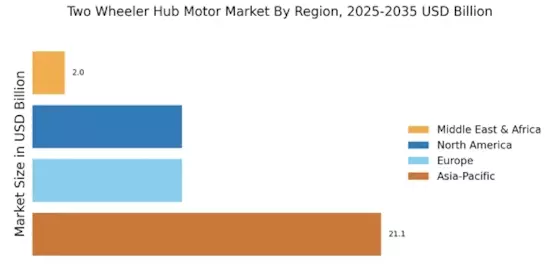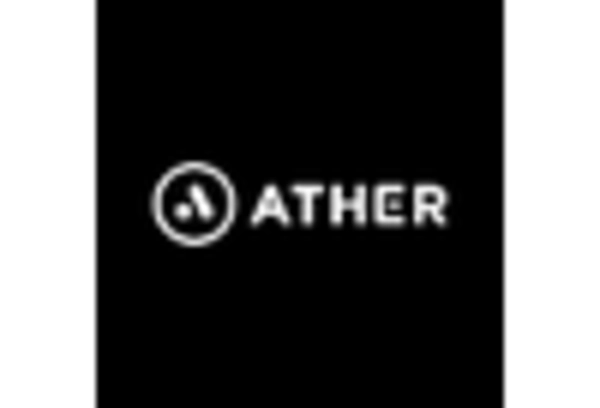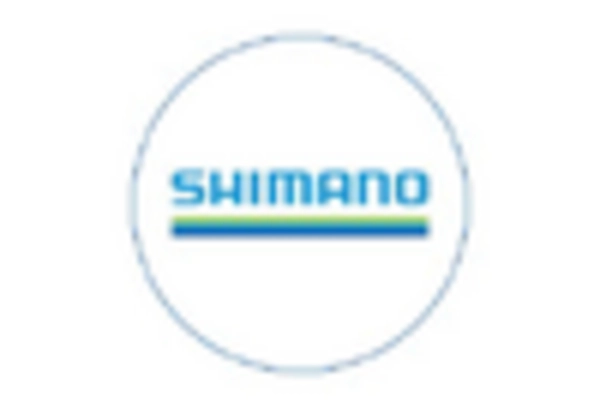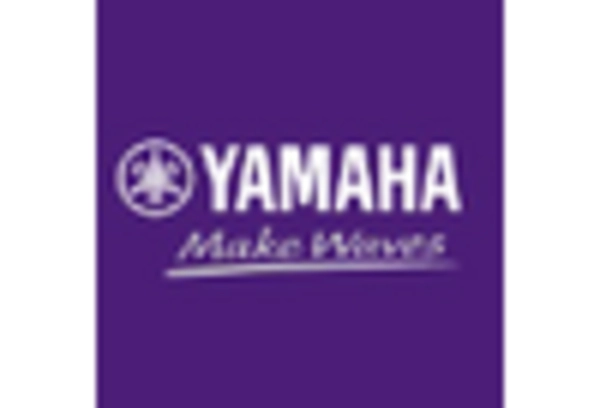Government Policies and Incentives
Government policies and incentives play a crucial role in shaping the Two Wheeler Hub Motor Market. Many countries are implementing stringent emission regulations and offering financial incentives for electric vehicle purchases. For example, tax rebates and subsidies for electric two-wheelers are becoming commonplace, encouraging consumers to transition from traditional vehicles. In 2025, it is anticipated that such policies will lead to a 25% increase in the adoption of electric two-wheelers. This regulatory support not only boosts consumer confidence but also stimulates investment in the Two Wheeler Hub Motor Market, as manufacturers seek to align their products with evolving standards and consumer preferences.
Rising Demand for Electric Vehicles
The increasing demand for electric vehicles (EVs) is a primary driver for the Two Wheeler Hub Motor Market. As consumers become more environmentally conscious, the shift towards electric two-wheelers is evident. In 2025, the market for electric two-wheelers is projected to reach approximately 10 million units, indicating a robust growth trajectory. This surge is largely attributed to government incentives and subsidies aimed at promoting electric mobility. The Two Wheeler Hub Motor Market is poised to benefit from this trend, as hub motors are integral to the efficiency and performance of electric two-wheelers. Furthermore, the growing awareness of the environmental impact of traditional combustion engines is likely to accelerate the adoption of electric two-wheelers equipped with hub motors.
Urbanization and Traffic Congestion
Urbanization and the resulting traffic congestion are driving the growth of the Two Wheeler Hub Motor Market. As urban populations swell, the demand for efficient and compact transportation solutions becomes increasingly critical. Two-wheelers, particularly electric models with hub motors, offer a practical solution to navigate congested city streets. In 2025, it is projected that urban areas will account for over 60% of two-wheeler sales, highlighting the need for efficient mobility solutions. The Two Wheeler Hub Motor Market is likely to capitalize on this trend, as consumers seek alternatives to traditional vehicles that contribute to traffic woes and environmental degradation.
Technological Innovations in Motor Design
Technological advancements in motor design are significantly influencing the Two Wheeler Hub Motor Market. Innovations such as improved energy density, enhanced thermal management, and advanced control systems are making hub motors more efficient and reliable. For instance, the introduction of brushless DC motors has led to higher efficiency rates, which can exceed 90%. This efficiency not only extends the range of electric two-wheelers but also reduces the overall cost of ownership for consumers. As manufacturers continue to invest in research and development, the Two Wheeler Hub Motor Market is expected to witness a surge in innovative products that cater to diverse consumer needs, thereby expanding market opportunities.
Consumer Preference for Cost-Effective Mobility
Consumer preference for cost-effective mobility solutions is a significant driver in the Two Wheeler Hub Motor Market. As fuel prices continue to fluctuate, many consumers are seeking alternatives that offer lower operating costs. Electric two-wheelers equipped with hub motors present a compelling option, as they typically have lower maintenance costs and higher energy efficiency compared to conventional vehicles. In 2025, it is estimated that the total cost of ownership for electric two-wheelers will be 30% lower than that of gasoline-powered counterparts. This economic advantage is likely to attract a broader consumer base to the Two Wheeler Hub Motor Market, further propelling its growth.


















Leave a Comment